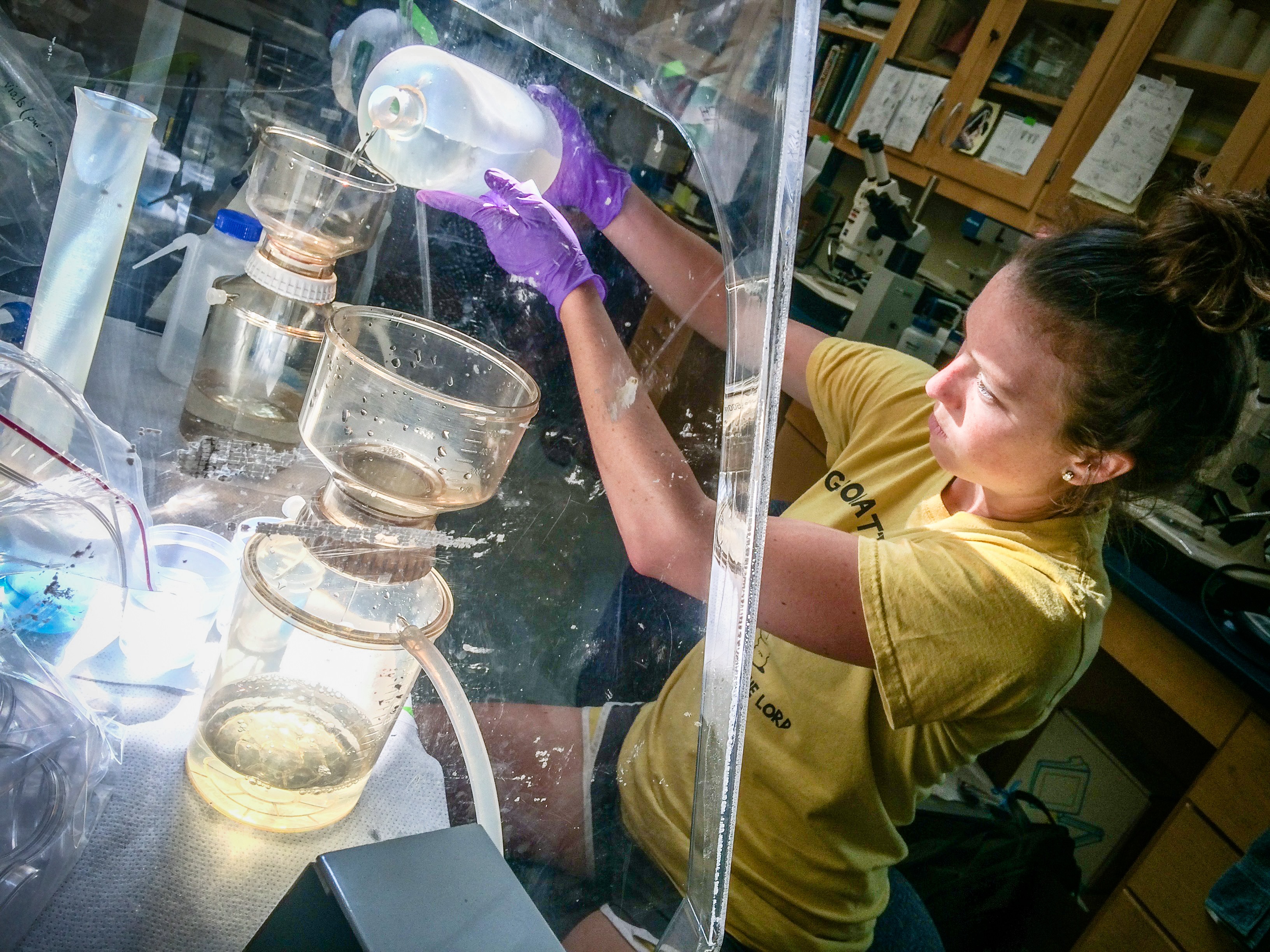Marine Science undergraduates can apply for the Mystic Aquarium Research Experience for Undergraduates, a program designed to promote independent research with real world application.
More info can be found here: http://www.mysticaquarium.org/reu/.
Marine Science undergraduates can apply for the Mystic Aquarium Research Experience for Undergraduates, a program designed to promote independent research with real world application.
More info can be found here: http://www.mysticaquarium.org/reu/.
Sofi Jonsson’s paper about how terrestrial discharges of organic matter increase the accumulation of methylmercury in estuary environments was featured in a BBC article.
MARN 4001 students attended the annual meeting of the local group Clean Up Sound and Harbors (CUSH), presenting posters on their findings on the ecosystem of Wequetequock Cove.
You can find their posters here.
Craig Tobias and Penny Vlahos win the SERDP 2016 Project-of-the-Year award for their work in studying the impact of munitions compounds in marine and estuarine ecosystems.
Read more about the project and the award here: https://serdp-estcp.org/News-and-Events/Blog/Tracking-the-Uptake-Translocation-Cycling-and-Metabolism-of-Munitions-Compounds-in-Coastal-Marine-Ecosystems-Using-Stable-Isotopic-Tracer.
New research by MSD faculty.
 Loading...
Loading...
Emily Seelen, a graduate student with Robert Mason who has a NSF Graduate Fellowship, was recently awarded a GROW (Graduate Research Opportunities Worldwide) fellowship to spend nine months working with Dr. Erik Björn at the University of Umeå in Sweden. Emily left in October to begin her study: “A molecular approach to understanding the bioavailability of methylmercury associated with various sources of natural dissolved organic matter (DOM)”. The focus is on coastal and oceanic DOM interaction with methylmercury, which has been studied very little relative to its interaction with other DOM pools. Emily’s research will involve the use of high resolution instrumentation to characterize the DOM and it’s methylmercury binding capacity including x-ray near edge adsorption structure spectroscopy, Orbitrap LC-MS, and other related approaches. Emily has been a NSF Graduate Fellow since July 2013.
Image: Emily extracting organic matter from water samples for her studies in Sweden.

Read the full article here.
An article by Prof. Visscher and colleagues was recently published in Nature Geosciences. The group assessed the chemistry and nature of cell-like globules found in 2.72-billion-year-old fossil stromatolites from Western Australia. The globules were composed of organic carbon and arsenic and their investigation suggests that life existed as a result of arsenic cycling before the Earth’s atmosphere and ocean were oxygenated. Details about this important finding can be found at:
http://www.nature.com/ngeo/journal/v7/n11/full/ngeo2276.html